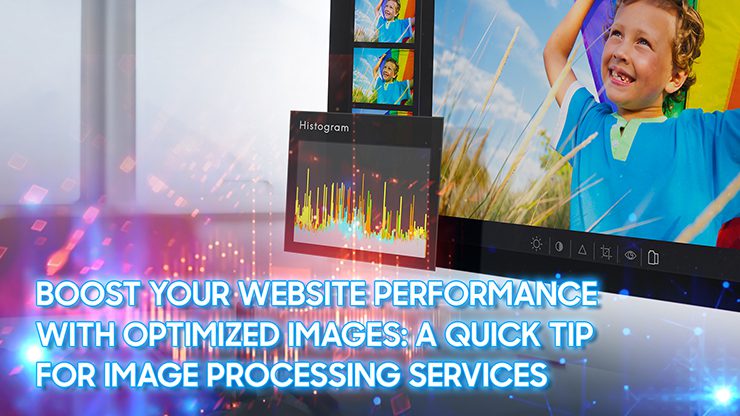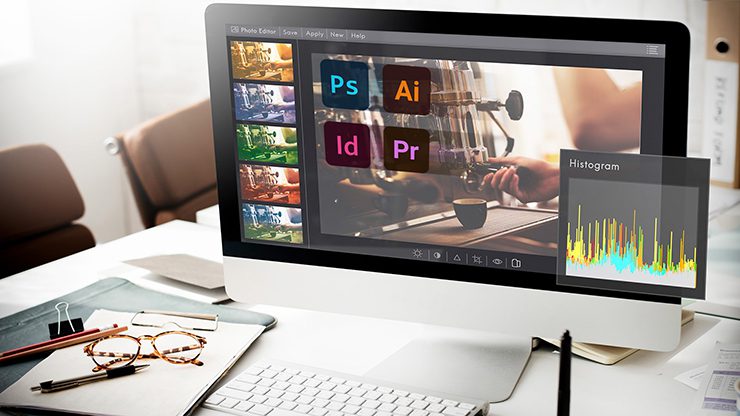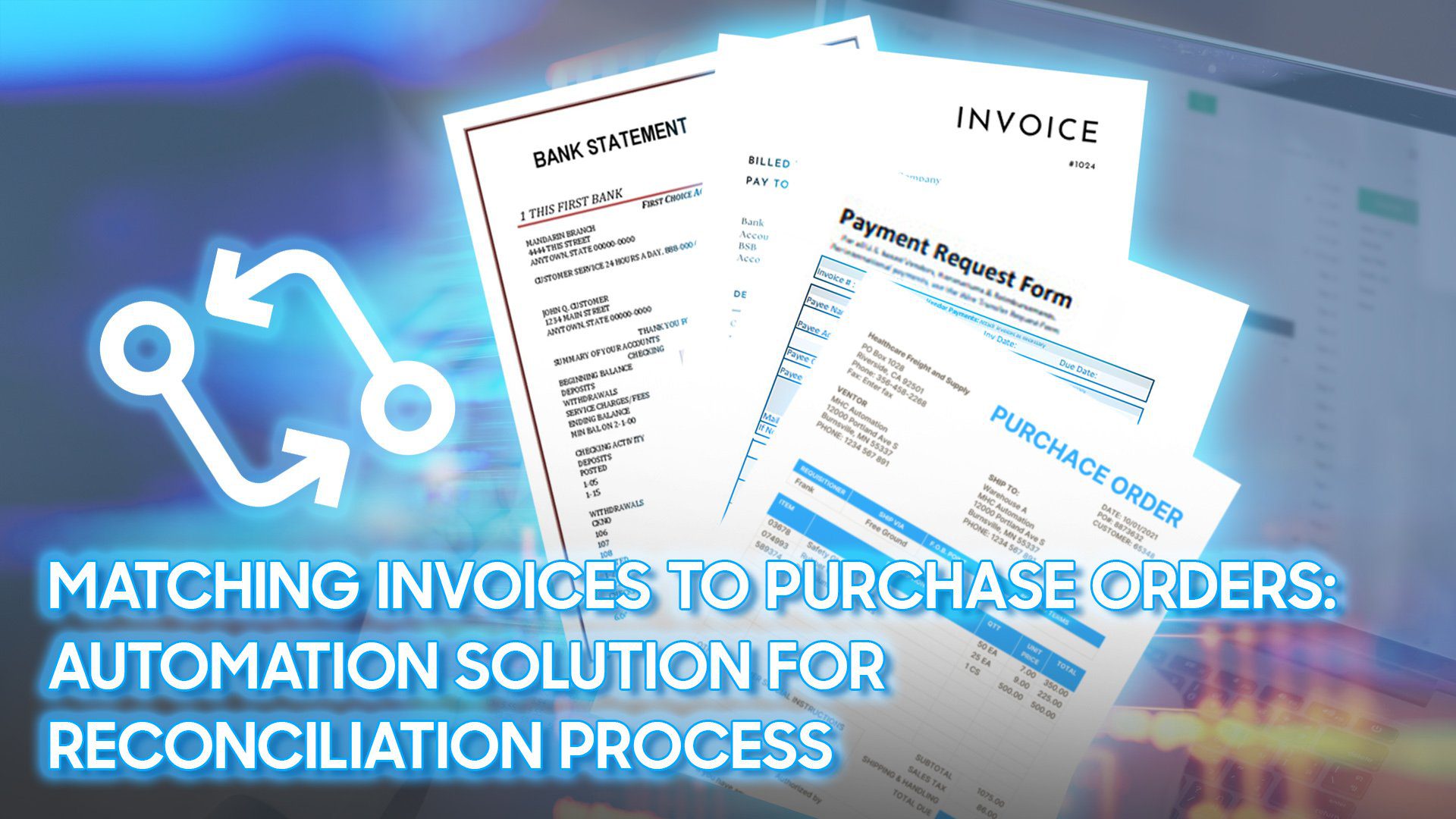Have you ever wondered how to effortlessly dominate search results, while others struggle to be seen? Besides concerns about on-page technical programming, it’s often the unsung hero – images – that make the difference.
In today’s visual-driven world, high-quality, optimized images are not just aesthetic enhancements, they’re website performance powerhouses waiting to be unleashed.

But fear not, image optimization doesn’t require a degree in coding! This post will serve as your roadmap to unlocking the hidden potential of your website images, turning them into ranking rockets that propel your site to the top of search results.
Image Optimization – The Silent Partners in Your Climb to the Top
While keywords and content rightfully claim the spotlight, there’s a silent duo waiting to be acknowledged: images and website performance.
Yes, you read that right! Images aren’t just visual eye candy; they’re powerful partners in your SEO (Search Engine Optimization) journey. But how exactly do they impact your ranking? Let’s delve into the fascinating world of image optimization and unveil the secrets behind its influence.
The Search Engine Perspective
Think of search engines like information detectives, constantly scouring the web for relevant and valuable content. When it comes to images, they analyze various factors:
- Image relevance: Do your images accurately represent your content and target keywords?
- Technical aspects: Are your images optimized for web performance (size, format, compression)?
- Accessibility: Can search engines and users understand your images through descriptive alt text?
By optimizing these elements, you’re essentially speaking the language search engines understand, making it easier for them to index and rank your images. This, in turn, positively impacts your overall website ranking, increasing your visibility and attracting more organic traffic.

However, the benefits of image optimization extend far beyond ranking algorithms. High-quality, optimized images enhance user experience in several ways:
- Faster loading times: Optimized images load quickly, keeping users engaged and preventing them from bouncing off your site.
- Improved accessibility: Descriptive alt text helps visually impaired users understand your content and makes your site more inclusive.
- Enhanced visual appeal: Eye-catching, relevant images grab attention, improve comprehension, and make your website more visually appealing.
Ultimately, optimized images contribute to a better user experience, which search engines recognize and reward with higher rankings. It’s a win-win situation!
Essential Image Optimization Techniques
Now that we understand the power of image optimization, let’s explore how to transform those hefty image files into SEO champions! Here are some essential techniques that will work wonders:

1. Choosing the Right Format
Not all formats are created equal. So, What image type is best for websites?
There’s no single “best” image format for websites, as the ideal choice depends on several factors:
Image type
- Photos
- JPEG: Best for photos with complex color variations due to its efficient lossy compression. However, quality degrades with each compression.
- WebP: Newer format offering smaller file sizes with comparable quality to JPEG. Wider browser support than AVIF, but not universal.
- AVIF: Even smaller files than WebP with potentially higher quality, but browser support is still limited.
- Icons, logos, text, graphics
- PNG: Supports transparency and lossless compression, preserving sharpness for text and graphics. Larger file size than JPEG/WebP.
- SVG: Scalable vector graphics format, perfect for logos and icons as they retain quality at any size. Not ideal for photos.
- Animations
- GIF: Supports simple animations, but limited color palette and large file sizes. Consider WebP or AVIF alternatives for newer browsers.
- WebP/AVIF: Offer animation capabilities, but browser support might be limited.
Beside image format, you should also look out for other considerations:
- Browser compatibility: Check which formats your target audience’s browsers support. If unsure, prioritize JPEG and PNG for wider reach.
- Image quality vs. file size: Balance visual quality with website loading speed. Smaller files load faster, but excessive compression can affect quality.
- Optimization: Use tools to optimize images regardless of format, reducing file size without significant quality loss.
2. Size Matters: Resize and Compress Wisely
Think of oversized images as weights dragging down your website’s loading speed. To avoid this:
- Resize images to their exact display dimensions. Don’t serve a 3000px image for a 200px thumbnail!
- Utilize compression tools and plugins to reduce file size without sacrificing quality. Aim for a significant size reduction without noticeable visual degradation.
The best image size depends on the specific purpose and placement of the image. Here are some examples:
- Hero images: 1920px wide is a common standard, but can go up to 2400px for high-resolution displays. Maintain a 16:9 aspect ratio for good widescreen compatibility.
- Blog post images: Aim for 1200px wide with a 3:2 or 4:3 aspect ratio. Wider images require horizontal scrolling on mobile devices.
- Product images: For e-commerce, use the recommended size by your platform (e.g., WooCommerce suggests 600px wide for single product images). Consider different sizes for product galleries and thumbnails.
- Social media images: Each platform has specific size requirements and optimal aspect ratios. Check their guidelines for best results.
- Logos and icons: Keep these relatively small, around 250px wide for desktops and 150px for mobile. Use SVG format for scalability.
Other factors also impact the way website developers choose an image size are:
- Responsive design: Images should adapt to different screen sizes. Use CSS techniques like <max-width> to ensure proper scaling.
- Mobile optimization: Prioritize smaller image sizes on mobile for faster loading times. Use responsive image formats like WebP and AVIF when possible.
- Image composition: Consider cropping or resizing images to fit the layout and focus on relevant content.
3. The Power of Words: Craft Compelling Alt Text
Alt text is like a voice describing your image to those who can’t see it (think visually impaired users and search engines). Here’s the key:
- Be descriptive and relevant: Include keywords related to your content but avoid keyword stuffing.
- Keep it concise but informative: Aim for around 125 characters.
- Every image deserves its unique alt text!
4. Filename Finesse: Descriptive is Delightful
Filenames like “IMG_0012.jpg” might be convenient for you, but not for search engines. Instead:
- Use descriptive filenames that incorporate relevant keywords.
- Separate words with hyphens instead of underscores.
- Keep it concise and clear.
By implementing these essential techniques, you can transform your images from mere visual elements to SEO assets that boost your website ranking and user experience. Stay tuned as we unlock the world of image processing services in the next part!
Advanced Image Processing Techniques
While the essential techniques covered earlier lay a solid foundation, sometimes you need some extra firepower. This is where advanced image processing services come in, offering a powerful arsenal to fine-tune your visuals for ultimate impact.
Specialized Techniques for Specific Needs
- Background Removal: Eliminate distracting backgrounds and boost image focus. This is perfect for product images, portraits, and showcasing specific elements.
- Image Resizing and Cropping: Achieve perfect dimensions for different website layouts and optimize for various devices. Say goodbye to stretched or pixelated images!
- Watermarking and Copyright Protection: Protect your intellectual property while maintaining image quality. Subtle watermarks deter unauthorized use and establish ownership.
- Image Restoration and Enhancement: Breathe new life into old or damaged images. Noise reduction, color correction, and sharpness adjustments can significantly improve visual quality.
- Creative Image Manipulation: Go beyond basic edits with specialized tools. Experiment with effects, collages, and creative compositions to stand out from the crowd.
Utilizing Image Processing Services: Your Secret for Enhancing Website Performance
So far, we’ve explored the fundamentals of image optimization and delved into powerful techniques to transform your images. But let’s face it, tackling complex tasks and managing large-scale image optimization can be daunting. This is where image processing services emerge as your secret weapon for SEO success.

What Services Provider Can Offer?
Professional image processing services providers go far beyond basic resizing and compression. They provide a comprehensive arsenal of tools and expertise to handle every aspect of image optimization:
- Expertise and advanced techniques: Image processing professionals have the knowledge and tools to perform complex tasks like background removal, image restoration, and creative manipulations that you might not be able to do yourself.
- Consistency and Scalability: Ensure consistent, high-quality image optimization across your entire website, even with large volumes of images.
- Technical optimization: They know the latest optimization best practices for different image formats, compression levels, and alt text, ensuring your images load quickly and are accessible to search engines.
- Expertise and efficiency: Leverage the skills of experienced professionals who stay updated on the latest trends and technologies, saving you time and effort.
- Customized solutions: Get tailored solutions that cater to your specific needs and goals, ensuring optimal results for your unique website.
- Stronger brand image: Professional visuals contribute to a polished and trustworthy brand perception, fostering trust with your audience.
- Accessibility compliance: Services can ensure your images meet accessibility standards, making your website inclusive for everyone.
- Regular updates and improvements: They stay up-to-date with the latest trends and technologies, ensuring your images are optimized for current standards.
- Cost-effectiveness: Depending on your volume and needs, outsourcing can be more cost-efficient than building your expertise and infrastructure.
Finding the Perfect Partner

With so many image processing service providers available, choosing the right one is crucial. Here are some key factors to consider:
- Scope of Services: Ensure they offer the specific techniques and solutions you need.
- Experience and Expertise: Look for a provider with a proven track record and specialized knowledge.
- Pricing and Turnaround Time: Choose a service that fits your budget and timeline expectations.
- Customer Support: Opt for a company with responsive and helpful customer support.
- Portfolio and Case Studies: Review their work to assess their style and quality.
Invest in Your Success
Image processing services are not just an expense; they’re an investment in your website’s success. By leveraging their expertise and powerful tools, you can unlock the full potential of your images to achieve:
- Improved Website Performance: Optimized images contribute significantly to improved SEO performance.
- Enhanced User Experience: Visually appealing and accessible images keep users engaged and coming back for more.
- Boosted Brand Image: Professional visuals project a strong and trustworthy brand identity.
When choosing an image processing service provider, consider your specific needs, budget, and desired outcomes. Look for a reputable company with a strong track record, expertise in your industry, and excellent customer service.


